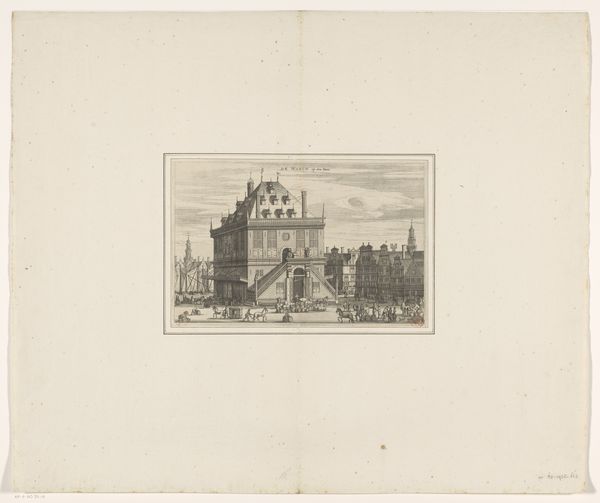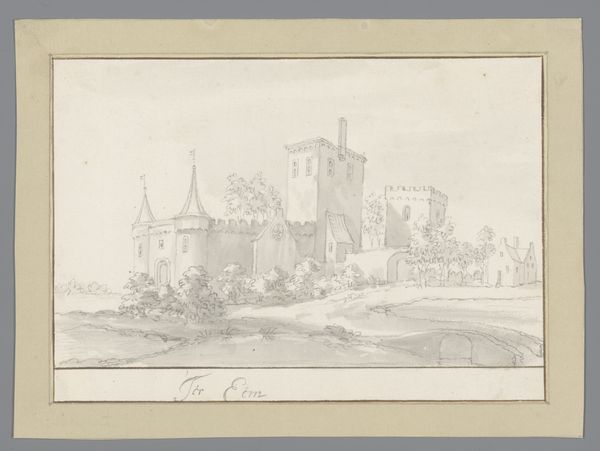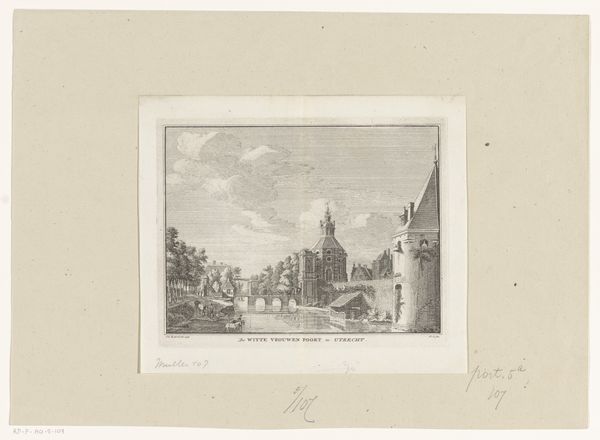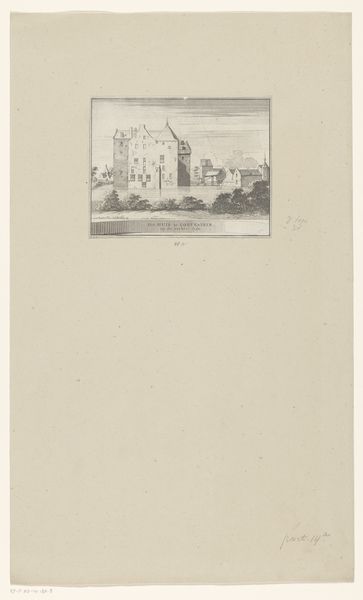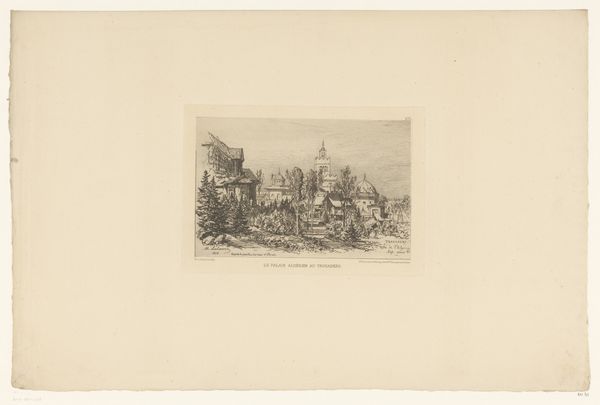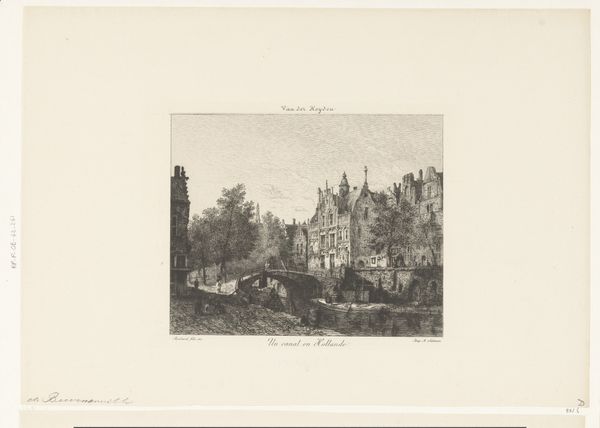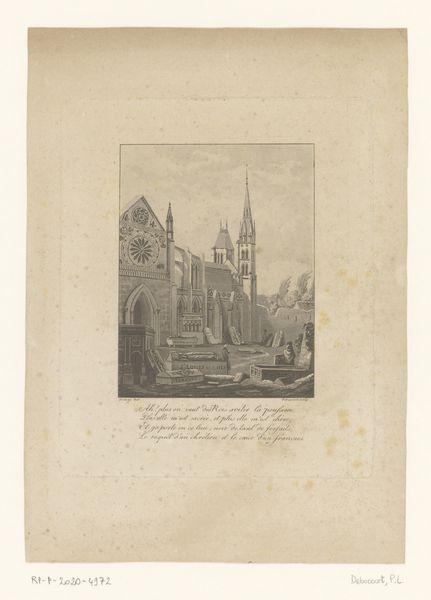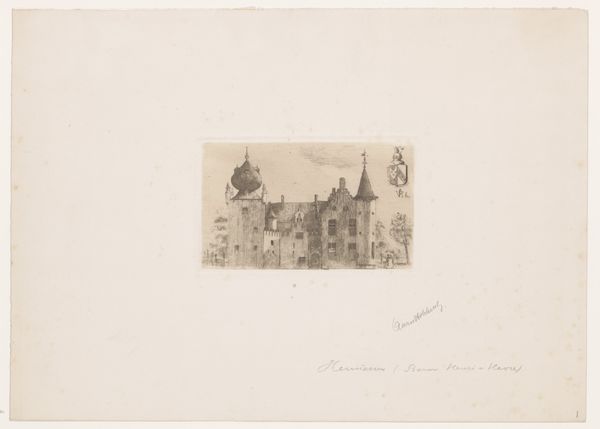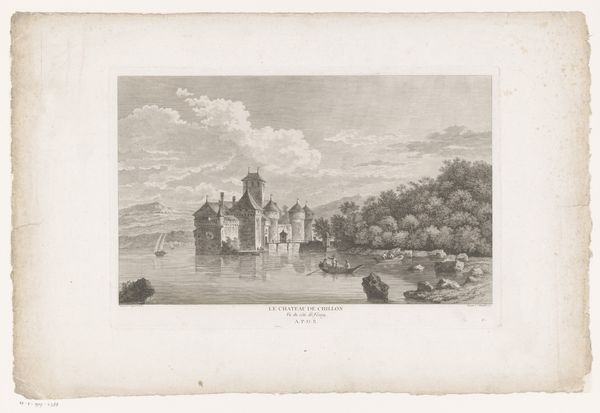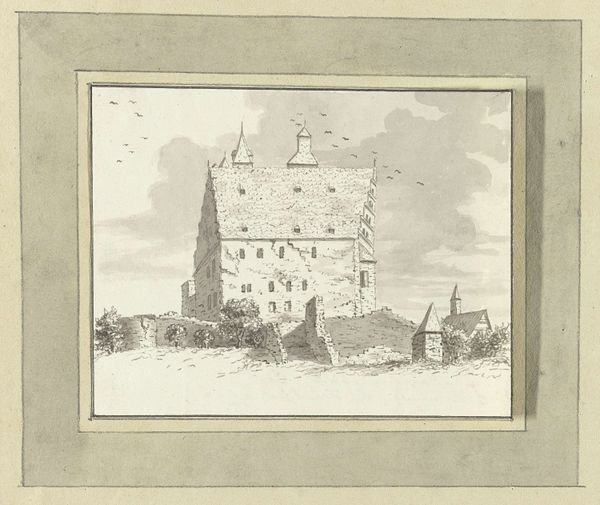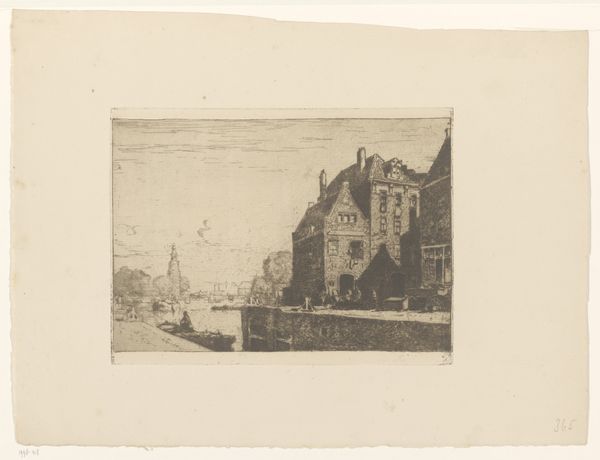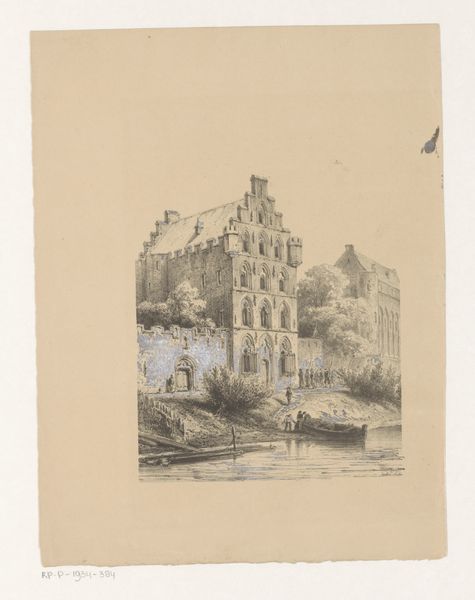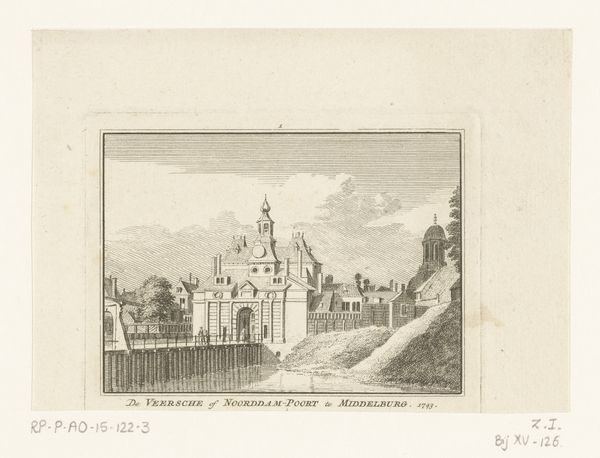
print, etching, engraving, architecture
#
baroque
#
dutch-golden-age
# print
#
etching
#
landscape
#
cityscape
#
engraving
#
architecture
Dimensions: height 141 mm, width 182 mm
Copyright: Rijks Museum: Open Domain
Editor: This etching and engraving by Jacobus Schijnvoet, titled "Gezicht op Kasteel Oudheusden," made sometime between 1711 and 1774, portrays a stately castle. The printmaking technique gives the scene a certain austerity. How do you interpret this work, especially considering the social context of the time? Curator: The scene, at first glance, depicts a simple, serene landscape, typical of the Dutch Golden Age's fascination with order. However, beneath this veneer of tranquility lies a complex social stratification. These grand structures weren't just aesthetic statements; they were potent symbols of power and land ownership. How might the individuals depicted near the castle be related to that power? Consider how the very act of producing and consuming such images reinforced a particular worldview, one privileging the wealthy elite. Editor: It is intriguing to consider those relationships of power at play. The small figures almost seem like an afterthought, which might itself be a statement about class and social standing. It feels different than, say, focusing on peasant life as other Golden Age artists were doing. Curator: Precisely. Think about it through the lens of critical race theory. While the figures seem innocuous, who is conspicuously absent from this image? Where are the voices and experiences of marginalized communities, of those dispossessed and displaced by this consolidation of power? What narratives are being intentionally silenced in favor of propagating a vision of order and stability? This calculated erasure reveals much about the prevailing ideologies of the time. Editor: So, by examining what’s *not* there, we gain a deeper understanding of the values and power structures present at the time? I’d initially focused on the style, but the social implications are fascinating and crucial. Curator: Exactly. Recognizing these power dynamics allows us to critically engage with historical artworks. Editor: I’ll certainly view landscapes differently from now on!
Comments
No comments
Be the first to comment and join the conversation on the ultimate creative platform.
